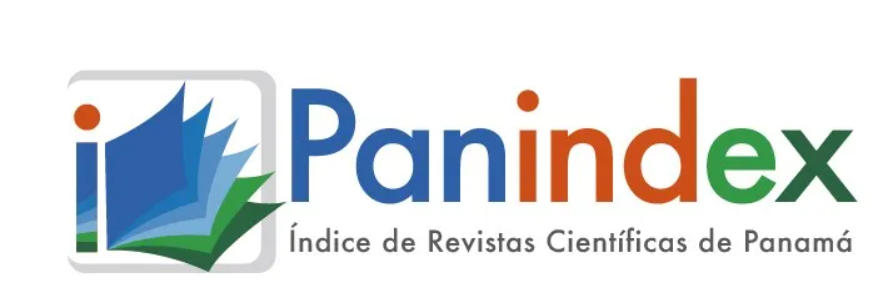The content of the publications and the links suggested in them are the sole responsibility of the authors and not of the METROPOLITAN UNIVERSITY OF EDUCATION, SCIENCE AND TECHNOLOGY (UMECIT) or DIALOGUS magazine. They are protected by international copyright laws as well as the UMECIT and DIALOGUS logos, hence their reproduction is totally prohibited.
This work is licensed under a Creative Commons Attribution-NonCommercial-NoDerivatives 4.0 International License.
The authors maintain the copyright and transfer the right of the first publication to the journal, with the article registered with Creative Commons Attribution-NonCommercial-NoDerivatives License, which allow others They can download the works published in this magazine and share them with other people, as long as their authorship is recognized, but they cannot be changed in any way nor can they be used commercially.
Authors are recommended to include their work in social networks such as Researchgate and institutional repositories once the article or visible fact has been published on the journal page, without forgetting to include the digital document identifier and the name of the journal.



Abstract
From cultural diversity, integrating aspects of societies and cultures can be recognized and visualized. Colonization has inherited a series of disagreements in relation to the presence of ethnic groups throughout the country, especially a low value to society. The educational institution, through education, could be the right place for boys and girls of the Saraguro ethnic group to share with other cultures and other ways of conceiving the world. The Saraguro are a culture that has remained over time, recognized in Ecuador for its presence and development. This work shows from education, the integration of boys and girls from other cultures, especially from Saraguro and shelters them from a dominant culture. Tolerance, respect and coexistence are necessary to recover spaces in education and in society. The educational experiences collaborate with the views towards the diverse and allow one to re-think the need to coexist in and from the educational spaces towards the plural society such as Ecuador. This experience gives an account from the Saraguro ethnic group, the possibilities and limitations that arise from education and the importance of coexistence. Finally, it is necessary that each culture is recognized in society as an integral part and that, from education, processes are strengthened and work is done for cultural diversity and, on the other hand, society in general must open itself unconditionally to each culture.
Keywords
References
Belote, J. D. (1998). Los Saraguros del sur del Ecuador. Quito: Abya-Yala.
Camboni, S; Juárez, J. (2020). Interculturalidad y Diversidad en la Educación. Concepciones, Políticas y Prácticas. México:
Universidad Autónoma Metropolitana.
Cardozo, A (2020). Diversidad Cultural y Educación: propiciando entornos más humanos. Diversidad Cultural y Educación: propiciando entornos más humanos - Cuestiones Educativas (uexternado.edu.co)
Constitución Política del Ecuador (2008). Asamblea Nacional Constituyente del Ecuador. Microsoft Word - CONSTITUCION 2008.doc (cancilleria.gob.ec)
CORAPE (2014). Vestimenta del pueblo Saraguro. Centro de documentación pueblos y nacionalidades. Vestimenta del pueblo Saraguro (corape.org.ec)
Han, Ch. B. (2017). La expulsión de lo distinto . Barcelona : Herder.
Gómez Nadal, P. (2017). Indios negros y otros indeseables. Quito: Abya Yala.
Hernandez Prado, M. Á. (2021). Diseño de una experiencia para trabajar la interculturalidad en Educación Infantil. Revista Electrónica en Educación y Pedagogía , 4.
Larrosa, J (1995). Tecnologías del yo y educación (Notas sobre la construcción y mediación de la experiencia pedagógica de sí. En: Larrosa, J. Escuela, poder, subjetivación. Madrid: La Piqueta pp.25
Ley Organiza de Educación Intercultural (2011). Ecuador. Ley Orgánica de Educación Intercultural | Ecuador - Guía Oficial de Trámites y Servicios (www.gob.ec)
Masson, P. (2005). Aspectos de la identidad étnico-cultural e histórico-social manifestada en la cultura tradicional indígena de una región de los Andes Ecuatorianos. Indiana, 22, 73-100. doi: 10.18441/ind.v22i0.72-100.
Martín, E. Mauri, T. (1996). La atención a la diversidad como eje vertebrador de la educación secundaria. Martin, E; Mauri, T., La atención a la diversidad en la educación secundaria. Barcelona: ICE-UB, Horsori, 13-36.
Ministerio de Educación del Ecuador (2022). Organización del Sistema Educativo. www.educacion.gob.ec
Muntaner, J (2000). Igualdad de 0portunidades en la escuela de la diversidad. Profesorado. Revista de Currículum y Formación de Profesorado. 2000;4(1):1-19. ISSN: 1138-414X. Disponible en: https://www.redalyc.org/articulo.oa?id=56751266003
Ogburn, D. E. (2007). Incas past and present: Archaeology and the Indigenous Saraguros of Southern Ecuador. Stanford Journal of Archaeology, 5, 134-163.
Ordoñes Sotomayor, A., & Ochoa Cueva , P. (2020). Ambiente, sociedad y turismo comunitario. La Etnia Saraguro en el Ecuador. Revista de Ciencias Sociales , 182-184.
Sartori, G. (2001). La sociedad multiétnica. Madrid: Taurus.
Unesco (2021). Declaración universal de la UNESCO sobre diversidad cultural. Diversidad Cultural (unesco.org)
Unesco (2010). Invertir en la Diversidad Cultural y el Diálogo cultural. Invertir en la diversidad cultural y el diálogo intercultural: informe mundial de la UNESCO - UNESCO Biblioteca Digital
Uruñuela, P. M. (2009). La gestión del aula, todo lo que me hubiera gustado saber cuando emepcé a enseñar. Madrid: Narcea.
Vergara, M. (2010). Desarrollo humano y diversidad cultural. http://www.redposgrados.org.mx/red_de_posgrados_en_educacion/publicaciones/desarrollo_humano_y_diversidad_cultural.pdf
Walsh, C. (2009). Interculturalidad, crítica y educación intercultural. Interculturalidad , 5.
Walsh, C. (2009). Interculturalidad, Estado, Sociedad. Luchas (de) coloniales de nuestra época. Quito: Universidad Andina Simón Bolívar/ Abya Yala.
Downloads
Publication Facts
Reviewer profiles N/A
Author statements
- Academic society
- Universidad Metropolitana de Educación, Ciencia y Tecnología
- Publisher
- Universidad Metropolitana de Educación, Ciencia y Tecnología




















